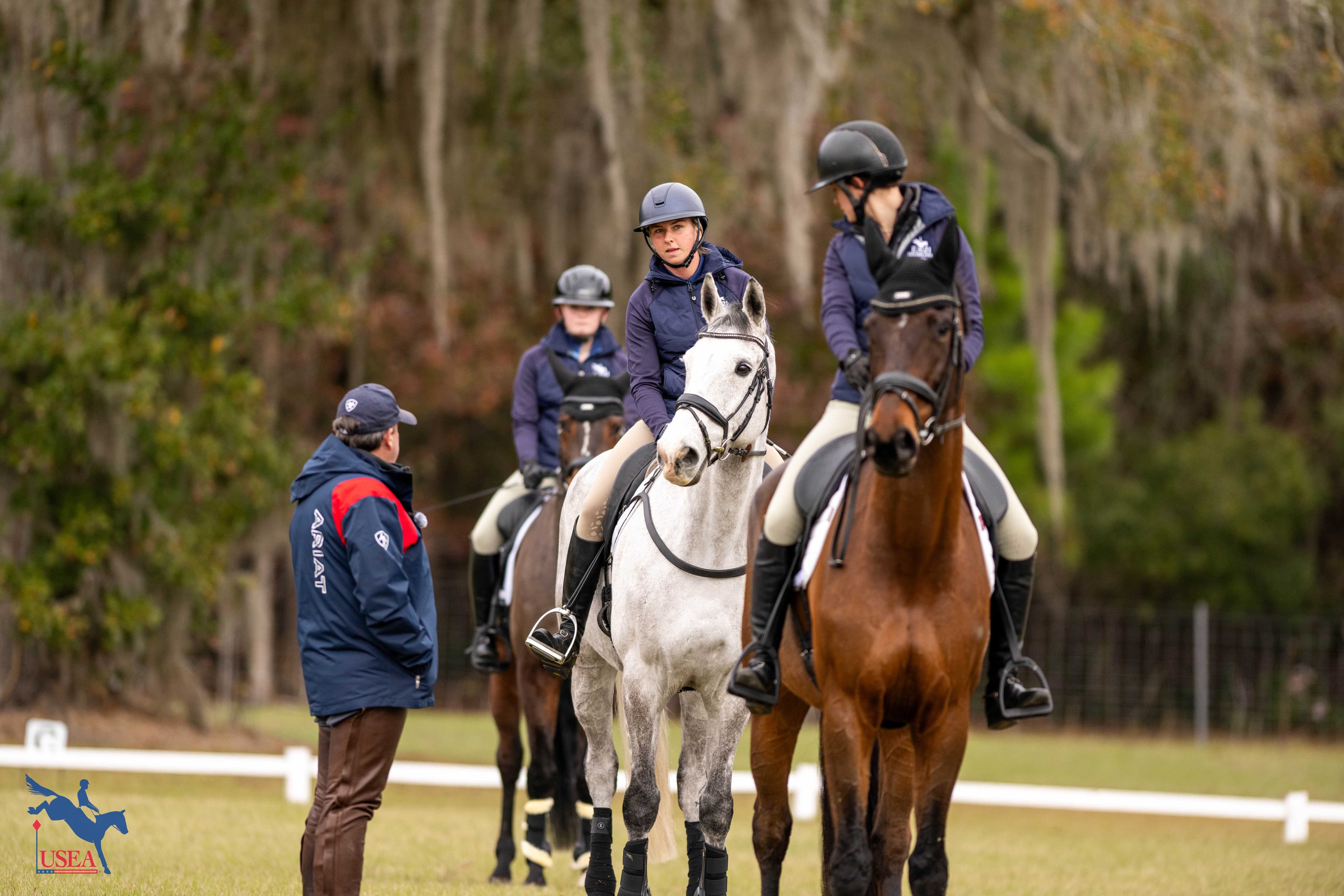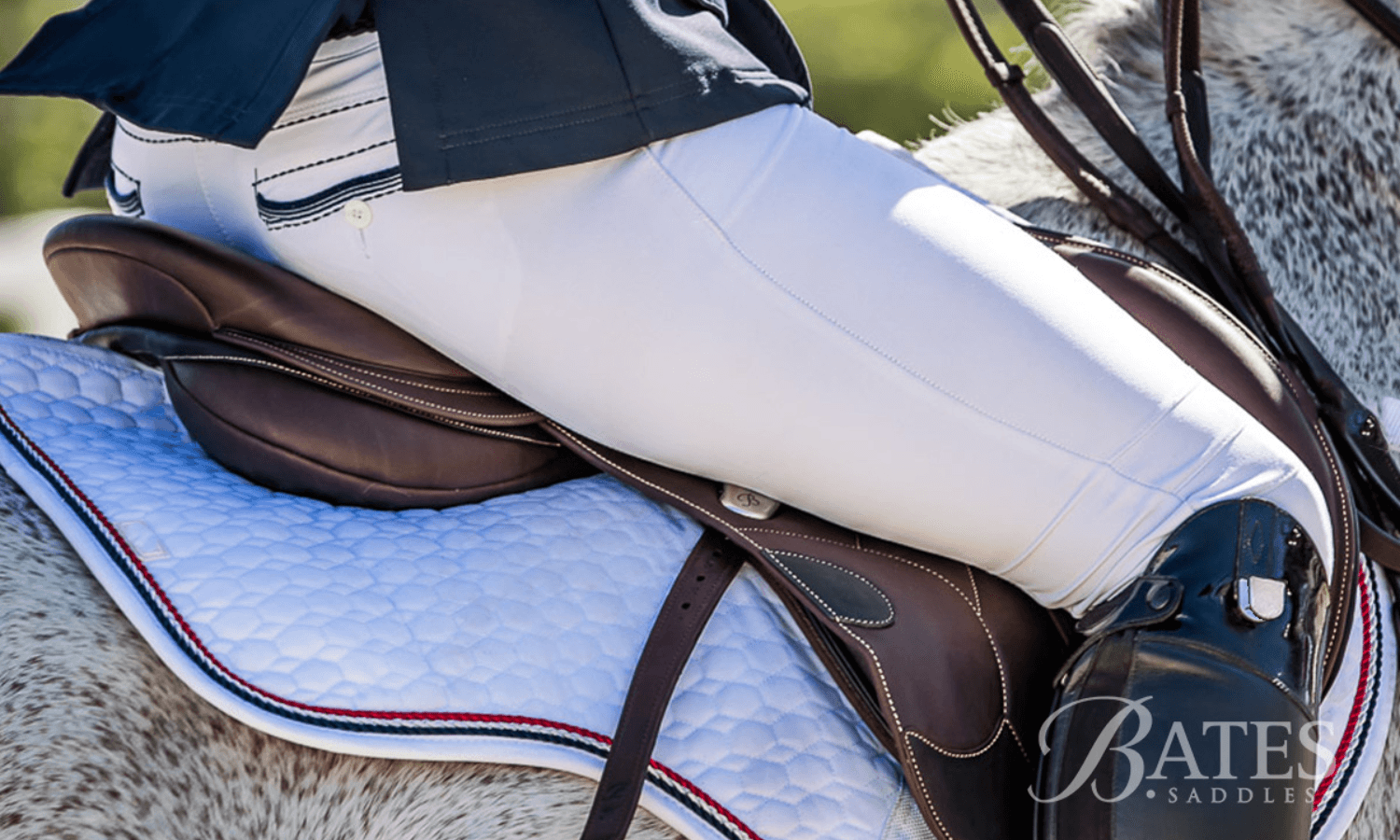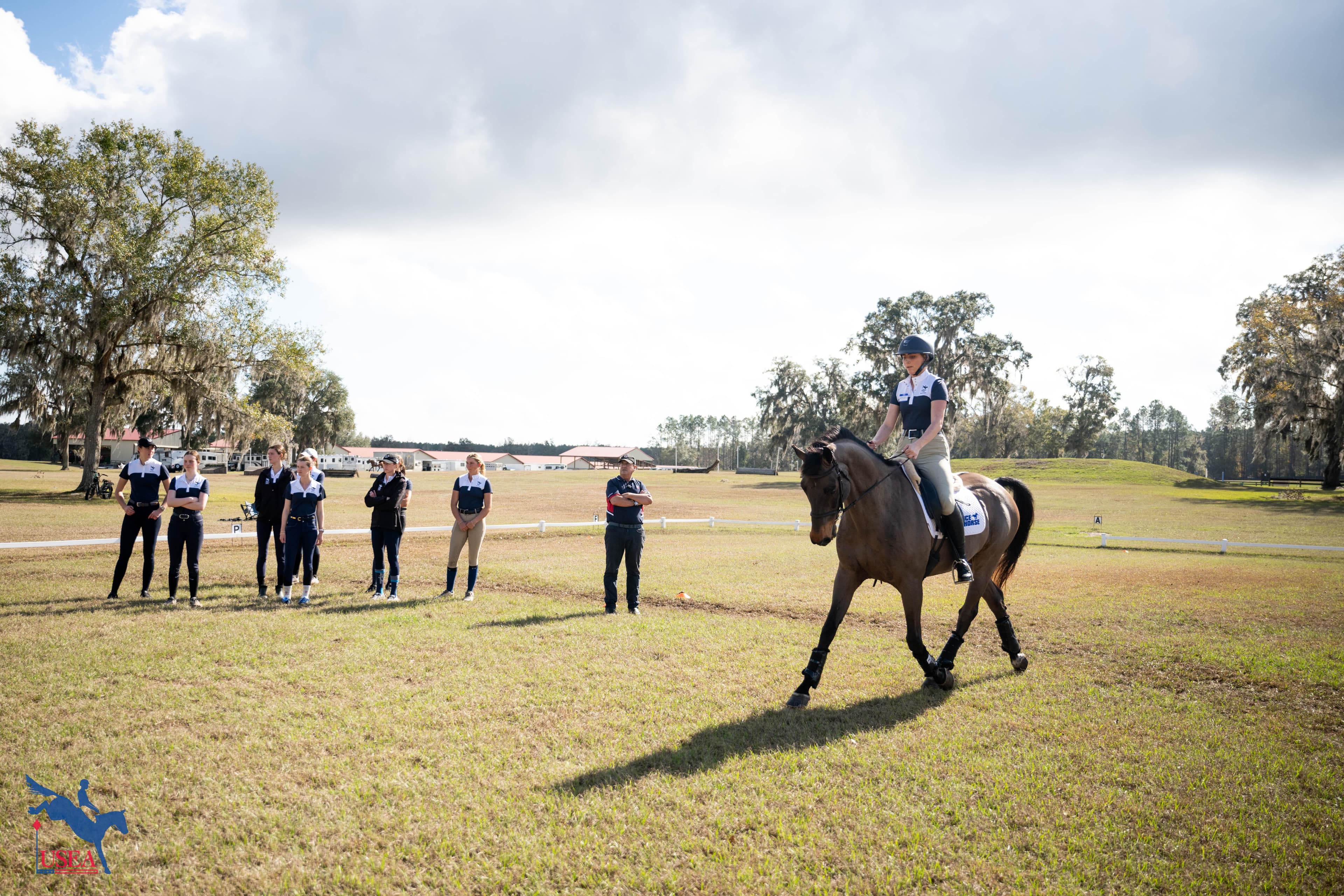Grid Pro Quo with Sara Kozumplik Murphy
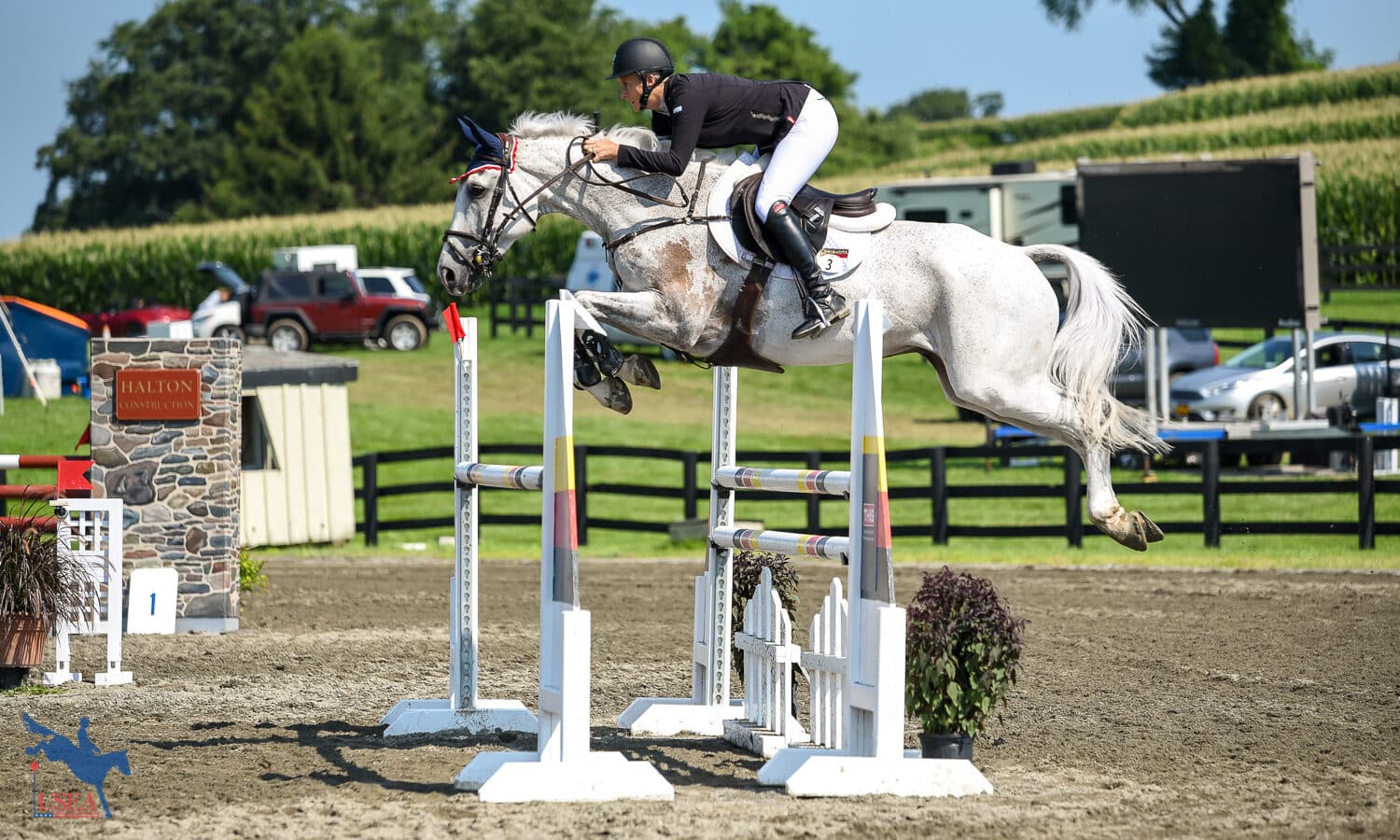
Ready to spice things up this winter training season? Do you want to use being stuck in the arena as an opportunity to fine tune your riding? In this series, we are revisiting some of our favorite Grid Pro Quo articles from Eventing USA to help you use the off-season to your advantage and keep you and your horse in tip-top shape for when it's time to get back out there. Click here to check out other past Grid Pro Quo exercises!
WHY:
One of the easiest ways to get a free education in the horse world is to go to your local horse show and just watch. We’re very lucky that in the sport of eventing you will often find Olympians competing side-by-side with adult amateurs and pony clubbers. And while you might get the most inspiration at a three- or four-star event, you can learn just as much as watching these same riders take their less experienced mounts around your local horse trials.
I’m lucky to be married to Brian Murphy, a good show jumping coach with a lot of experience with eventers, and together we spend a lot of time watching our fellow competitors, both in eventing and pure show jumping. And one thing that we notice at our local horse trials is that riders are simply not getting their numbers right in the show jumping. Whether they simply don’t have enough canter to get in the proper striding or are splicing their turns, we often see riders putting five strides in a four-stride combination, which is easy to fix if given the proper tools.
Brian always stresses to me that in eventing, we don’t actually jump anything that is that big or that tricky, especially in comparison to Grand Prix show jumping courses. In order to be successful over any show jumping course, riders simply need to jump straight and in a nice balance. Once riders can do that, and do that consistently, it’s fairly easy to then teach the horse how to jump clear.
And this is where this exercise is perfect! It is more of a rider exercise that really allows the rider to focus on finessing their aides, while the horse is set up for success with very clear distances between the fences.
HOW:
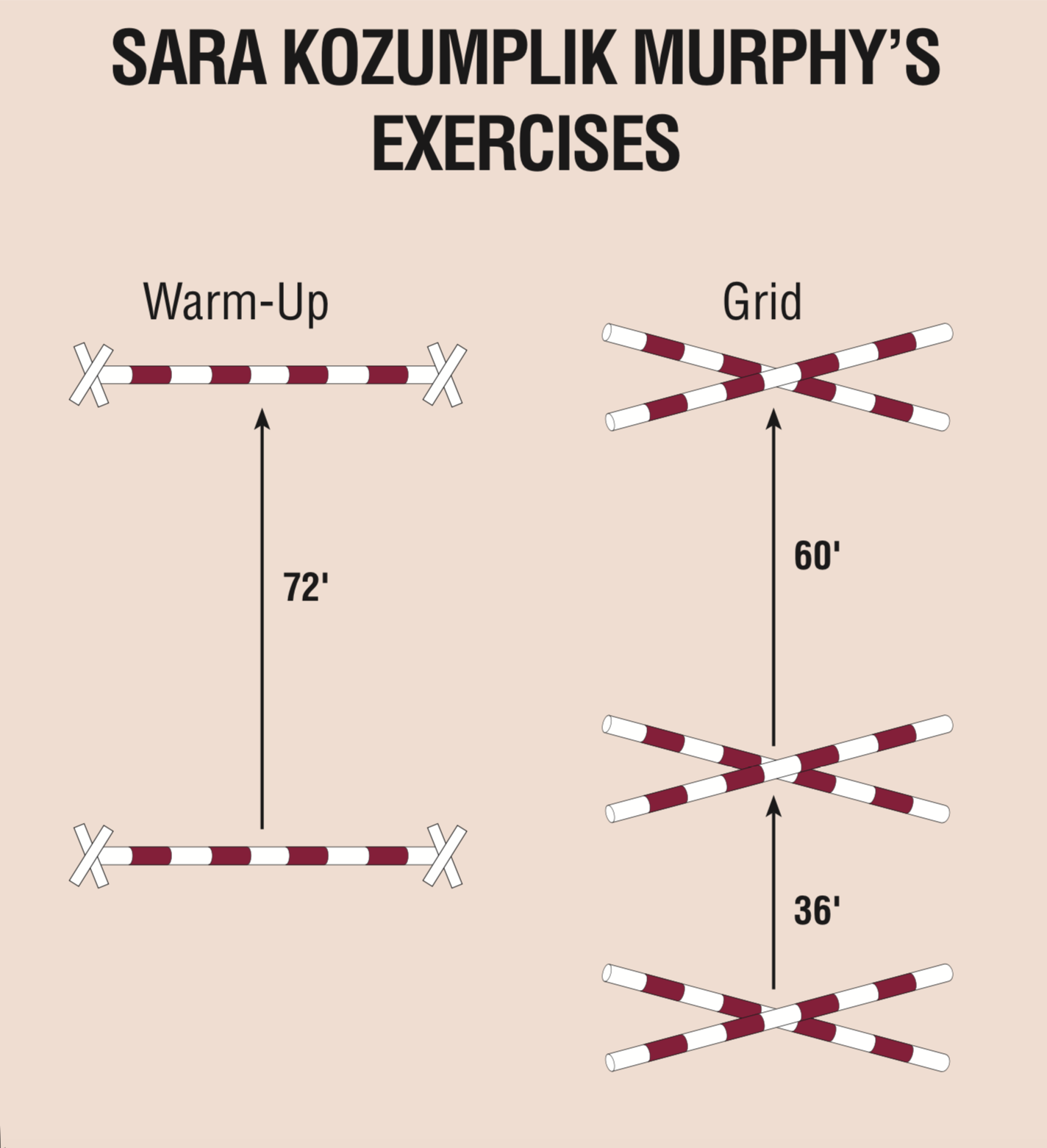
To start off any schooling session with my horses, whether it is dressage or jumping, I always walk for 20 minutes. We’re lucky to have a lot of hacking space at both of our farms, so this is a great way to just get out and stretch your horse’s legs. From there I will do the basic work that we do in our dressage schooling sessions, which will vary depending on the level of the horse that I’m riding. The younger horses will simply need to be able to move off of my leg in either direction, and also go forward and come back with little resistance. The more experienced horses will probably do some more lateral work, and I will expect more of a change when I ask them to extend and then collect within each gait. Regardless of the level, I am looking for my horse to be loose through their bodies and appropriately responsive to my aides.
Once I feel that my horse is ready to jump, I will always start with a quick jump warm up over a pair of cavaletti set 72 feet – or a “ring 5” – apart on the long side of the arena. If my horse is at the Novice or Training level, I will play with the striding and expect to be able to get four, five, and six strides between the two cavaletti. My more advanced horses should be able to get anywhere from four to ten strides between the two cavaletti. Very often we will leave the cavaletti set up in our arena most weeks, and even if we’re working on coursework, we’ll integrate the cavaletti into the jump school.
From here, I will go straight to the exercise with the first two cross-rails set up to complete a nice two-stride combination. (Please note that if you don’t have the cavaletti exercise available to you, it is a good idea to warm up over a single cross-rail a few times to get your horse’s jump muscles working.) The purpose of this 36-foot two-stride combination is so the rider can learn what their “ring canter” needs to be on their horse. By keeping the jumps small, you leave yourself open to being able to repeat the exercise several times without putting unnecessary wear and tear on your horse.
By being able to repeat this over and over, I am able to make small adjustments to my horse’s canter until I get it just right so they pop through this exercise in a perfect, even two strides. From here I will add in the final cross-rail, and work on consistently getting four strides between the second and third cross-rails. If I’m on a more experienced horse, I will oftentimes set the cross-rails in the highest cup to make them really tall and keep my horse’s attention.
While each horse is different, the end result always needs to be the same: rhythmic, relaxed, forward, and straight. With each horse, I am trying to create the type of canter that allows me to soften to the base of the jump, regardless of whether it is an 18-inch cross-rail or a 4-foot vertical. And regardless of whether I’m in the middle of a two-stride combination or a four-stride combination, you’re looking for even strides throughout so that you’re neither needing to make a big “whoa” at the last stride or a big “go.” You want your last step in a combination to be the same, if not calmer than, your first stride. To put it simply, this exercise will methodically show you what your ring canter should be.
While I am repeating this exercise, I make sure that I not only alternate the direction of my approach, but that I remain straight throughout the exercise. Remember that show jumping in eventing is not overly technical, so it is all about having the proper reaction in the air over a jump and upon landing so that you can make adjustments early enough before your next jump.
Once you are confident with your initial straight gymnastic exercise, you can start to add in some optional bending lines. If it helps you, don’t be afraid to set up a series of cones so that you are staying on your line and not falling in or staying too far out on your turns. At the end of the day, we cannot train our horses to be careful until we as riders are riding correctly and effectively.
And please remember that if at any point in this exercise you feel as though your horse is starting to fatigue either physically or mentally, it is always more than okay to end a few jumps early rather than push your limits and run into trouble. We will often leave this exercise set up in our arena for a week or two at a time so that we can work through it in a few jump sessions rather than try to cram it all into one jump session.
About Sara Kozumplik Murphy
Sara Kozumplik Murphy is a lifelong eventer and competed at her first Rolex Kentucky Three-Day Event at the age of 20 on her off-the-track Thoroughbred As You Like It. Since then she has competed at some of the biggest shows in the world including the Blenheim International CCI3*, Bramham CCI3*, Burghley CCI4*, and Badminton CCI4*. Alongside her husband Brian, Kozumplik Murphy operates a successful business at Overlook Farm in Virginia and at Mardanza Farm in Florida. Together they enjoy coaching a great group of clients and often buy and sell horses for riders of all levels. To learn more about Kozumplik Murphy, visit www.overlookfarmequestriancenter.com.
This Grid Pro Quo first appeared in Volume 47, Issue 2 of Eventing USA.

